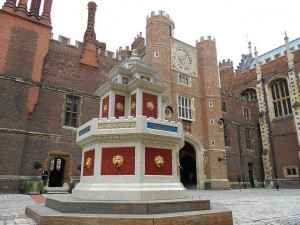
On 10th May 1536, Giles Heron, foreman of the Grand Jury of Middlesex and son-in-law of the late Sir Thomas More, announced that the jury had decided that there was sufficient evidence to suggest that Anne Boleyn, George Boleyn, Mark Smeaton, Sir Henry Norris, Sir Francis Weston and William Brereton were guilty of the alleged crimes carried out at Hampton Court Palace and Whitehall, and that they should be indicted and sent to trial before a jury.
Click here to read the indictment drawn up by the jury, which described Anne Boleyn as “seduced by evil”, as having malice in her heart, and having “frail and carnal appetites”. It also went into detail on the incest charge, accusing Anne of seducing her brother George by “alluring him with her tongue”.
Also, on this day in 1536, Sir William Kingston, the Constable of the Tower of London, was ordered “to bring up the bodies of Sir Francis Weston, knt. Henry Noreys, esq. William Bryerton, esq. and Mark Smeton, gent. at Westminster, on Friday next after three weeks of Easter”, i.e. on 12th May, for their trial.
And just three years earlier, on 10th May 1533, a special court at Dunstable was opened by Archbishop Cranmer to rule on the validity of the marriage of Henry VIII and Catherine of Aragon. On 23rd May, Cranmer’s court ruled that the marriage between Henry VIII and Catherine of Aragon was against the will of God, and declared that the marriage was null and void. On 28th May 1533, Cranmer proclaimed the validity of Henry VIII’s marriage to Anne Boleyn after a special enquiry at Lambeth Palace.
Notes and Sources
- LP x. 876
- Wriothesley, Charles. A Chronicle of England During the Reigns of the Tudors, from A.D. 1485 to 1559, 201, Appendix, Baga de Secretis Pouch VIII